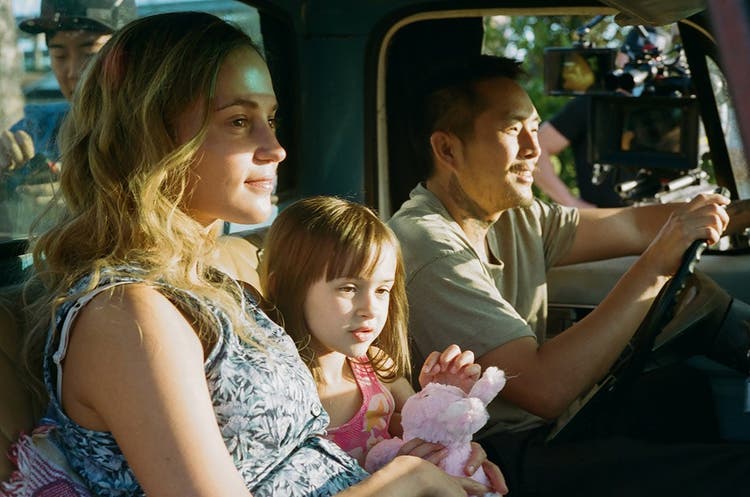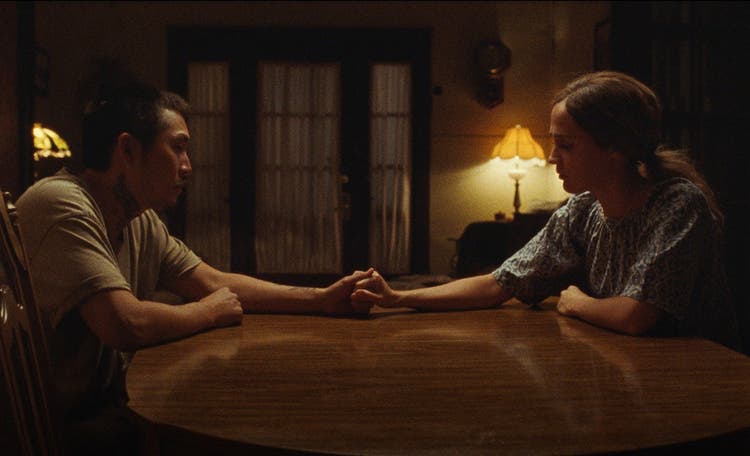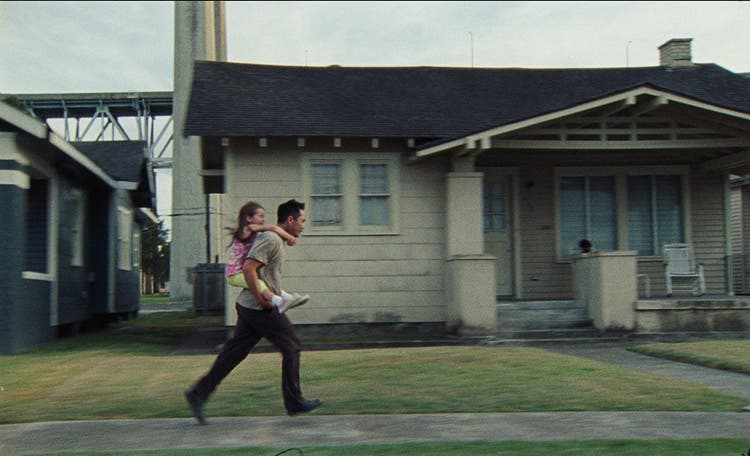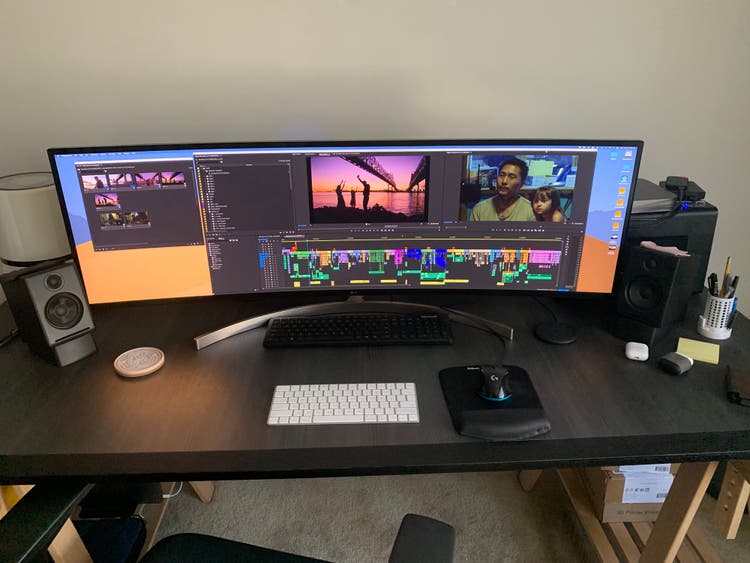Down the Blue Bayou with editor Reynolds Barney

Image source: Focus Features.
An official 2021 Cannes Film Festival selection that is premiering theatrically today, Focus Features’ Blue Bayou is a gripping family drama from award-winning writer and director Justin Chon.
Blue Bayou is a star-driven vehicle that tells the moving story of Antonio Leblanc (Chon), a Korean adoptee raised in the Louisiana bayou, and his wife Kathy (Alicia Vikander), who struggle to keep their family together as Antonio faces deportation to a country he doesn’t know.
We sat down with the film’s editor Reynolds Barney, who shared how he used Adobe Premiere Pro to bring this emotional story to life.
How and where did you first learn to edit?
I first started editing using iMovie and Sony Vegas when I was in high school. I did things like school projects, skits, and dorky action scenes with friends. I was born and raised in Hawaii, so for undergrad I stayed and attended the University of Hawaii’s film program, called Academy for Creative Media. Using Adobe Premiere Pro, I learned more by “doing” as I directed my own projects for school. I’ve probably tried out every position there is in the film world, but I just really gravitated toward editing and stuck with it. I went on to attend the American Film Institute, where I got a more traditional education in editing.
How do you begin a project/set up your workspace?
I have a meticulously organized project file that I use for every assignment, and I’m almost constantly updating it. Either my assistant (if I’m lucky enough to have one) or I start binning up whatever needs to be organized. When I’m ready to cut, I begin with more manageable tasks to get going, like more simple scenes or cutting selects. Then, I dive into the more creative work.
Tell us about a favorite scene or moment from this project and why it stands out to you.
I quite like the motorcycle “heist” sequence we have in Blue Bayou. A few clips are in the trailer, but without spoiling too much, our main character Antonio has to raise $5,000 to pay his lawyer’s fees, so he turns to robbing a motorcycle dealership with his old crew. I think the stakes are incredibly high, he could get caught or get away and both scenarios would keep driving the story. It’s a very edge-of-your-seat sequence. Because we shot on 16mm, our cinematographers Matthew Chuang and Ante Cheng were able to do some really cool cross-processing and step printing with the film stock, which added to the dream-like nature that a lot of the movie’s sequences have.

What was it like editing the film remotely?
For us, we picture locked basically the week the major quarantine procedures happened in LA. It was a bit weird going from meeting with all the producers in one room, then the next day we were making last tweaks over Zoom. Post-sound and color had to happen all remotely. Our sound facility was out in New Orleans so we did our sound spotting session by pointing a webcam at a screen and then having the audio directly input. Syncing a video file between so many different parties was still new to us, so Premiere Pro was the simplest solution.
What Adobe tools did you use on this project and why did you originally choose them? Why were they the best choice for this project?
We cut Blue Bayou on Premiere Pro. Premiere Pro has a really great client monitor system built in that I use a lot. Justin Chon (Director, Blue Bayou) set up a huge projector in his office and I was able to run an HDMI into it and give him his own screen. We also used this whenever we screened the film for a guest. I would just play the cut straight out of Premiere Pro.
What do you like about Premiere Pro, and/or any of the other tools you used?
Justin and I have a pretty scrappy way of doing editorial. I have a very module Mac Mini setup, so I brought my system to New Orleans where we shot, and I edited out of a hotel room. After we wrapped filming, we worked for a month in Hawaii (Justin could have a sort of work-cation) and then returned to LA. Premiere Pro is very easy for me to work around and troubleshoot when I’m on my own. There was no server setup or anything fancy. For about the last quarter of editorial we had more normal post-facility support with an assistant editor and additional editor.

What’s your hidden gem/favorite workflow hack in Adobe Creative Cloud?
Not sure how widely used this is, but for adjusting volume I like to just right click the audio on the timeline and hit “audio gain” If an entire scene’s volume is a little low, you can select multiple audio clips and do this as well. The waveform preview also updates accordingly on the timeline. This works really well for any temporary sounds I might be bringing in. I can do a huge 20db adjustment and then go in and keyframe the volume effect, getting however specific I need to with the sound.
Who is your creative inspiration and why?
I would honestly say Justin is my main creative inspiration. When I was in college I had a professor, Joel Moffett, who really pushed me out of my comfort zone creatively. Then when I was at AFI it felt like the whole student body was my motivation. Working with Justin, I feel like I’m in a third threshold with my creativity as a filmmaker and editor. Looking back, those other milestones in my life seem easy compared to working with Justin. But, I’m glad for that.
What’s the toughest thing you’ve had to face in your career and how did you overcome it? What advice do you have for aspiring filmmakers or content creators?
Editing Blue Bayou has been the biggest and most difficult thing I’ve worked on so far. I’d done a few quarter-million indie features before this, but it was a lot of pressure knowing there was a studio backing Blue Bayou and everything the film stands for in general. Thankfully, Macro and eOne were always on board with Justin’s vision for the project. When working on the film I just focused on giving 100 percent to it every day.
Share a photo of where you work. What’s your favorite thing about your workspace and why?
During quarantine I started dabbling with Blender and 3D design, so I recently built my first PC (thanks to a friend who sold me a used 2080 TI at MSRP). I then engineered this overly complicated setup. Behind my gigantic monitor I mounted a display-port and USB switcher, so I can use the same peripherals between my Mac and PC. I prefer the compact Apple keyboard for editing, but wanted a numpad keyboard for Blender, so I have two keyboards. It’s a plus that I can still use the Adobe Creative Cloud on my PC. However, my Mac is still my main editing rig, it recently went with me to Florida as well, where I just got back from cutting another indie feature.

Blue Bayou is now playing in theatres.